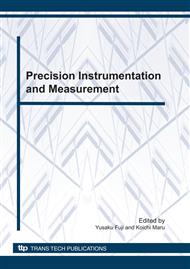p.370
p.376
p.381
p.387
p.395
p.405
p.413
p.422
p.430
Binocular Stereo Vision Based-Recognition of 3D Shapes in Life Space Employing Fuzzy Clustering-Based Modeling in Enlarged Dimension
Abstract:
Obtaining visual information is a crucial issue for autonomous robots. Indeed per¬ception of 3D depth information can be achieved by 3D measurement instruments such as laser range fingers and stereo visions, but the obtained range data is no more than a cloud 3d coordinate data. To obtain meaningful information for objects, more advanced intellgent sens¬ing is required. In this paper, a fuzzy-clustering-based modeling method of multiple quadric surfaces in a scene is proposed. This method is intended for scenes involving multiple objects, where each object is approximated by a primitive model. The proposed method is composed of three steps. In the first step, 3D data is reconstructed using a stereo matching technique from a stereo image whose scene involves multiple objects. Next, the 3D data is divided into a single object by employing fuzzy c-means accompanied by principal component analysis (PCA) and a criterion with respect to the number of clusters. Finally, the shape of each object is extracted by fuzzy c-varieties with noise clustering. The proposed method was evaluated with respect to some pilot scenes whose ground truth data is known, and it was shown to specify each location and each shape for multiple objects very well.
Info:
Periodical:
Pages:
395-404
Citation:
Online since:
October 2010
Authors:
Keywords:
Price:
Сopyright:
© 2010 Trans Tech Publications Ltd. All Rights Reserved
Share:
Citation:


